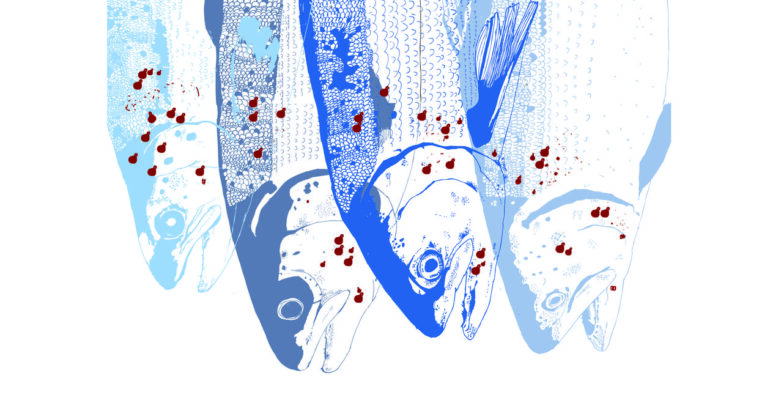TL;DR:
- Researchers in Scotland apply advanced technology for detecting microscopic sea lice larvae.
- The project combines holographic 3D imaging, AI, and machine learning for early warning in fish farming.
- Funding of over £538,000 was secured from key partners, including the UK Seafood Innovation Fund.
- The initiative garners support from Hi-Z 3D, Mowi, the Scottish Environment Protection Agency, and the Scottish Government.
- Advanced holographic cameras and AI enable instant and precise sea lice identification.
- Current sea lice detection methods involve time-consuming lab analysis; this technology offers rapid results.
- Digital holography records a volume of water, providing data equivalent to thousands of standard images.
- AI training is crucial for distinguishing sea lice from other zooplankton species.
- The system is being trained with thousands of holographic sea lice images.
- A dedicated sea lice hatchery aids in software training, improving accuracy over time.
Main AI News:
In a promising development, a team of researchers based in Scotland is harnessing cutting-edge technology originally designed for identifying minuscule marine organisms and particles to potentially revolutionize the detection of microscopic sea lice larvae. Their ambitious project seeks to employ a combination of holographic 3D imaging, machine learning, and artificial intelligence (AI) to establish an early warning system catered to fish farmers’ needs.
This innovative endeavor is spearheaded by a collaborative effort, led by distinguished experts in engineering and digital holography from the University of Aberdeen, in partnership with the Scottish Association for Marine Science (SAMS). The project has recently received a substantial financial boost, exceeding £538,000 in funding, from esteemed partners such as the UK Seafood Innovation Fund and SAIC, the Sustainable Aquaculture Innovation Centre. Further support for this groundbreaking initiative comes from Electronics enterprise Hi-Z 3D, seafood producer Mowi, the Scottish Environment Protection Agency, and the Scottish Government’s Marine Directorate.
Central to this pioneering venture are advanced underwater holographic cameras, developed at the University of Aberdeen. Coupled with AI-driven automated image identification technology, this system holds the potential to accurately identify the natural presence and abundance of sea lice in the ocean. Simultaneously, it offers invaluable assistance to fish farmers by facilitating swift and effective sea lice detection and management at Scottish salmon farms. This marks a significant departure from the current practice, where testing for these parasites necessitates collecting water samples and conducting time-consuming microscopic analyses in a lab, sometimes taking several days to yield results.
Digital holography, as opposed to standard cameras and 2D photography, presents distinct advantages when dealing with microorganisms, as asserted by the research team. The holographic camera has the remarkable capability to instantaneously capture a volume of water and generate high-resolution images of the diverse particles present within. Thus, a single hologram can deliver data equivalent to thousands of conventional photographic images.
One of the challenges tackled by the researchers involves distinguishing sea lice from other zooplankton species, often likened to finding a needle in a haystack. To overcome this hurdle, the team is leveraging AI to train the system effectively. The AI component will undergo training with thousands of holographic images of sea lice, meticulously recorded in the laboratory at SAMS. This comprehensive dataset will be instrumental in facilitating the identification of sea lice when the tool is deployed in real-world scenarios.
Dr. Thangavel Thevar, hailing from the University of Aberdeen’s School of Engineering, elucidates, “The type of camera being used in this project was first developed for the identification of marine organisms and microparticles in the ocean. However, as it provides an accurate reflection of the different species present in the water, we saw an opportunity for the tool to be used to support the aquaculture sector with fish health management. The holographic imaging technology will be supported by AI and machine learning, which will help with the identification and cut processing time significantly. A major element of the project is to train the tool to recognize sea lice over other species, and the images gathered over the next 18 months will help us to create the baseline for future analysis.“
To facilitate the software’s training in detecting the elusive parasite, SAMS has established a dedicated sea lice hatchery for the project’s purposes. Sample images from this hatchery will serve as the initial dataset, while digitally labeled holographs will be continually fed into the system to enhance its ability to distinguish sea lice from other plankton species. This innovative fusion of holography, AI, and marine science holds the promise of transforming fish farming practices, making them more efficient and sustainable while ensuring the health and well-being of the aquatic ecosystems.
Conclusion:
This innovative convergence of holography, AI, and marine science has the potential to revolutionize the aquaculture sector. Providing rapid and accurate sea lice detection not only enhances fish health management but also contributes to the sustainability and efficiency of salmon farming. This technology could significantly impact the market by reducing losses due to sea lice infestations and improving overall productivity in the aquaculture industry.

